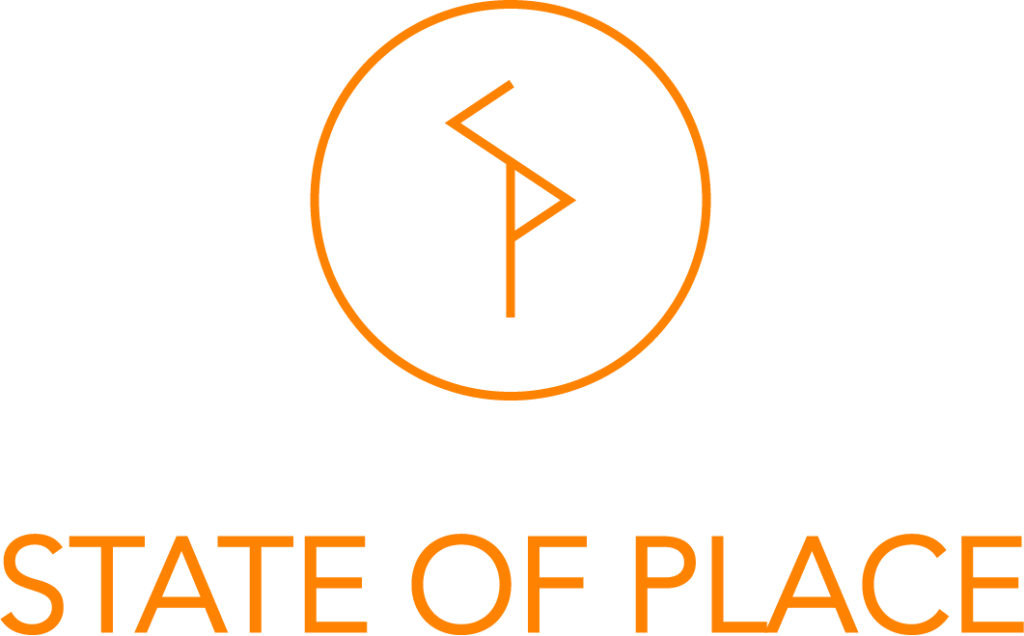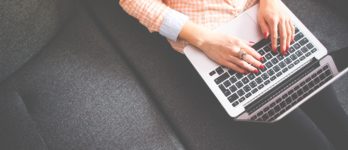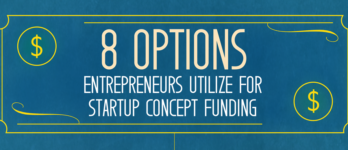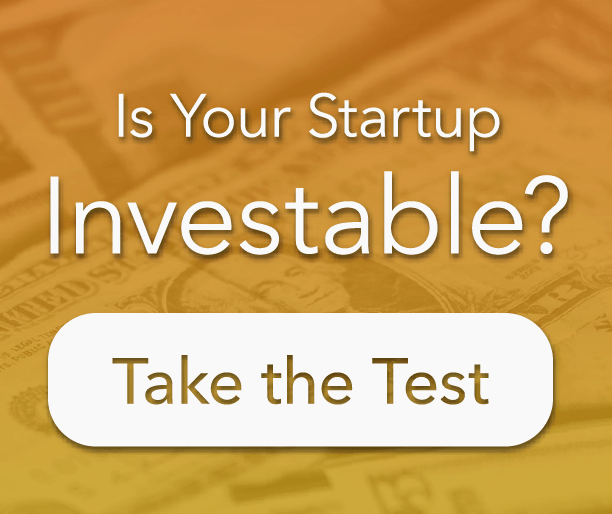
State of Place helps cities and developers address the supply-demand for walkable places with the biggest bang for the buck. We make a data-driven investment case for these projects and calculate the ROI of creating walkable, livable, sustainable places.

Mariela Alfonzo
Name: State of Place
Location: Boston, NYC, Shanghai
Website: www.stateofplace.co
Product video: https://youtu.be/EjXfkeUrChY
Product / Service Offering: urban data analytics platform State of Place
Co-founder Interviewed: Mariela Alfonzo
Other Key Management Team Members: Michelle Woodhouse – COO, Anna Maikova – CMO, Andy Likuski – CTO. We also have 7 additional interns that contribute to R&D, marketing, operations, and sales.
This article is part of our Women Entrepreneurs Spotlight series featuring female entrepreneurs and their companies. We hope these founders’ interviews will inspire and motivate you as you undertake your own entrepreneurial journey.
Tell us a little about yourself with a focus on what motivates you?
I am the Founder and CEO of State of Place, a communication and decision-making tool for the urban planning and real estate industries. State of Place quantifies what people love about cities and why it makes sense to make them better. My passion for great places was sparked by growing up in the car-dominated, strip-mall laden placeless Miami suburbs. Early on it was obvious to me that place mattered – but I knew simply preaching my passion for place alone wasn’t enough. I pursued Ph.D. in Urban Planning, not with the aim of spending my days bemoaning the ills of auto-oriented landscapes from inside an ivory tower, but with the goal of imparting real change.
Nearly 15 years later, I am a researcher with over 15 years of expertise in the nexus between urban design and behavior, focusing on quantifying the triple-bottom line value of place. I was awarded as Urban Land Institute’s 40 under 40 Best Young Land Use Professionals and a Fulbright Scholarship to study walkability in China. Recently I was named a Placemaking Fellowship by the NewCities Foundation, tapping into my expertise related to making cities more inclusive, connected, healthy, and vibrant. In addition, I teach entrepreneurship and urban design at New York University.
When did you establish your company and where did the idea originate?
Growing up as a teenager in the suburbs of Miami ignited my passion for great places. My most exhilarating memory is playing a real-life game of Frogger. I tight-roped down pencil-thin sidewalks, dodging cars as I crossed strip-mall lined highways – masquerading as streets – all to get a chicken teriyaki sub.
 I started consulting while still in graduate school, but even then, my ethos was markedly different than that of other consultants. My aim was to bridge the gap between practice and academia, and translate research on the impact of urban design on behavior into evidence-based sustainable planning, design, and development solutions. However, I soon found illustrating that the built environment produced real social value wasn’t enough to move the needle on how planning and real estate development actually got done. Instead, I had to clearly demonstrate the economic value proposition at play. But to do so, not only did I have to quantify what good urban design was, I also had to somehow put a price on the intangible benefits it provided. Instead of being put off by this challenge, I was invigorated by it. Over a decade in the making, in 2016, the State of Place software was formally developed.
I started consulting while still in graduate school, but even then, my ethos was markedly different than that of other consultants. My aim was to bridge the gap between practice and academia, and translate research on the impact of urban design on behavior into evidence-based sustainable planning, design, and development solutions. However, I soon found illustrating that the built environment produced real social value wasn’t enough to move the needle on how planning and real estate development actually got done. Instead, I had to clearly demonstrate the economic value proposition at play. But to do so, not only did I have to quantify what good urban design was, I also had to somehow put a price on the intangible benefits it provided. Instead of being put off by this challenge, I was invigorated by it. Over a decade in the making, in 2016, the State of Place software was formally developed.
What need or needs does your company seek to fill for its customers?
State of Place addresses:
- An acute, recognized problem: how to heed the supply-demand mismatch for walkable, livable places, given over 80% of Americans want to live in walkable places but only ⅓ of U.S. cities fit the bill. While cities and developers totally get it and are striving to create more walkable places, they still face a lot of opposition internally and externally and have to justify why they should be spending money on these kinds of projects. So, they hire expensive consultants to create great plans for walkable places. Unfortunately, those “experts” can’t produce hard data to show why those plans make sense – fiscally. Rather, they offer anecdotal evidence or case studies which are really easy to shoot down. So these plans often just end up collecting dust.
- A latent need, waiting for disruption: the need to shift from an opinion-based, expert-driven approach to city-making, to an evidence-based, data-driven one, especially in light of the growing Smart City movement.
In response, we have developed and deployed the minimum viable version of the State of Place Software as a Service (SaaS) platform, which is comprised of a proprietary database, algorithms, and forecasting models.
State of Place;
- Measures the quality of the built environment based on 290+ features, such as street trees, sidewalks, benches, collected at the block-level, then aggregates it into a score from 0 to 100 (State of Place Index);
- Diagnoses the built environment assets and needs of a block, set of blocks, or neighborhood(s) based on ten urban design dimensions like density, pedestrian amenities, and parks and public spaces (State of Place Profile);
- Identifies design changes most likely to maximize the bang for the buck, given existing conditions, development goals, and the feasibility of making certain changes over others (Prioritize);
- Quantifies the potential walkability and quality of place of proposed development scenarios (Scenario Analysis); and
- Predicts the economic impact of those proposed scenarios (Forecast).
State of Place helps cities and developers address the supply-demand mismatch for walkable places and fulfill their Smart City goals. We identify built environment changes with the biggest bang for the buck and make a data-driven investment case for these projects, by calculating the ROI of creating walkable, livable, sustainable places.
Accordingly, State of Place offers the following benefits:
- Cost-effectively and efficiently achieve Smart City objectives
- Access to micro-scale data built environment data to inform redevelopment priorities and land acquisition processes
- Balance the need for walkability against other priorities and financial realities
- Convince “naysayers” – including internal stakeholders (elected officials, budget officers, traffic engineers) and external ones (residents, developers) – of benefits of proposed plans and projects
What is the one thing that sets your company apart from its competitors?
While there are other “data” startups tackling city problems, we’re the only one collecting primary data on the “micro-scale” qualities of city blocks. This matters to how people experience places – and that can actually be changed – and aggregating it in a way that shows what’s contributing to the quality of place and what’s not. We’re also the only ones with a forecasting model that ties that data to real-world outcomes. This matters to decision-makers by helping them identify what changes make sense, then arming them with the data they need to defend and justify spending money on those changes.
Uniquely, our technology captures over 16 years of research in the urban design/planning space. State of Place essentially distills and translates the results of hundreds of empirical studies into a beautifully designed and easy-to-use software. This not only guides and optimizes planning and development decision-making, but also helps effectively communicate the message about why walkable, livable places matter. This differentiator allows us to provide not just smart data but SMART recommendations, and is a key part of our unique value proposition, accompanied with our Founder’s deep domain expertise, renowned status, and thought leadership in this space.
What was the biggest challenge you faced while getting your company up and running, and how did you overcome it?
Being an ethnic-minority woman in majority-men fields (both urban development and tech) has been challenging with respect to securing funding and buy-in. Our mission is to fundamentally disrupt how city-making is done. That’s a tall order for anyone, but it’s especially difficult for a woman to be spearheading that effort. Especially when the “usual suspects” dominating the field you are attempting to introduce a paradigm shift are currently white middle-aged men. Add to that the difficulty of bridging the investment divide, it’s impressive that our women-led team has come as far as it has despite the odds!
How have we done it? Our unwavering belief in our mission and our unrelenting passion for awesome places! We also have an ability to attract amazing talent willing to intern with us or volunteer their time, which has made it possible to bootstrap for as long as we have. I’ve also given my all to State of Place – not just emotionally but financially too. I’ve personally invested more than $100K in earned capital from my previous consulting company, and not having a salary over the course of 18+ (non-consecutive) months.
Are there resources you have utilized that other founders might find compelling or useful?
Our team is located in different cities across the globe. I split time between Boston/New York and Shanghai, our CTO Andy is in Silicon Valley, COO Michelle – in Detroit, and CMO Anna – in Moscow, Russia. Over time, we have mastered remote work. We host our team meetings and customer calls via Gotomeeting. For scheduling calls, we use Youcanbookme. For CRM (Customer Relationships Management), we use Hubspot, which is great for managing sales pipelines and tracking communications with clients. Evernote is great for storing procedures and work protocols. For task management, we use Trello cards and lists, and for instant communication, we chat via Slack. And, of course, work doesn’t get done without GSuite and Gmail in particular!
What steps have you taken to secure funding for your company and what, if anything, would you do differently if you had to start over?
We received a $150K grant from the National Science Foundation’s Small Business Innovation Research program, and our Founder/CEO has contributed $150K+ in capital and sweat equity.
Have there been any questions you have had as an entrepreneur of a fledgling startup that you had a particularly hard time finding the answers to?
Sizing our market size bottom-up has been an incredibly difficult thing to do. I wish there were better resources for not just how to go about doing it, but also accurate, more accessible sources of information.
What challenges, if any, are you grappling with?
Sales cycles in B2G are long – both planners and developers are conservative buyers of technology. Purchase decisions in the public sector can be complex, lengthy, and involve many different stakeholders including users, payers, key influencers, and points of access. Additionally, the development process is complex and lengthy, and the real estate sector is generally risk-averse. Other specific hurdles include public procurement challenges, IT manager resistance, competitive responses from existing consultants, and an emphasis on brand recognition as a market pull factor/acceptance.
What is the most helpful tip or “hack” you’ve ever learned, stumbled across, or been given?
Again, I point to our bootstrapping ways overall. There are people who share your passion and want to do meaningful work, even if that doesn’t immediately – or ever – get them paid. I think this is especially true of the tech space. There are so many apps out there that perhaps are cool, but aren’t out to really change the world, to make it a better place. We have now realized that our mission is the key to attracting great talent, and we have embraced that advantage, capitalized upon it, and successfully leveraged it to significantly reduce our costs – and more importantly, significantly increase our value!
Useful Mission – 5 questions to ask when writing a mission statement
Is there anything else you would like to share about your company?
We are very honored, humbled and excited to have been accepted to KickStart Accelerator. Thanks to all you data-geeks, place-lovers, and State of Place enthusiasts for believing in us and in our mission to make the world a better (more sustainable, livable, and equitable) place to live!
 Our vision is to disrupt the planning and real estate industry, replacing the pervasive ideologically-based, expert-driven approach accessible only to a few, with an evidence-based, data-driven one accessible to the many. Accordingly, in 10 years, the way city-making is done will be revolutionized. City-makers will no longer be led by siloed, project-by-project thinking and will begin planning in a more holistic, forward-thinking approach. City-making will be highly efficient and effective. No longer will normative-based assumptions about what makes for good cities inform what does and doesn’t happen. No longer will significant amounts of time and money be wasted on non-optimal projects or producing something that wasn’t really desired or needed to begin with.
Our vision is to disrupt the planning and real estate industry, replacing the pervasive ideologically-based, expert-driven approach accessible only to a few, with an evidence-based, data-driven one accessible to the many. Accordingly, in 10 years, the way city-making is done will be revolutionized. City-makers will no longer be led by siloed, project-by-project thinking and will begin planning in a more holistic, forward-thinking approach. City-making will be highly efficient and effective. No longer will normative-based assumptions about what makes for good cities inform what does and doesn’t happen. No longer will significant amounts of time and money be wasted on non-optimal projects or producing something that wasn’t really desired or needed to begin with.
State of Place’s approach is essentially like Lean Startups for cities.
Our platform helps
- cities
- developers
- policy-makers
- transportation planners
- regional authorities
- public health agencies
- healthcare organizations
all identify the specific set of changes that are most (statistically) likely to produce the outcomes they are investing in to begin with. We will also end the flawed build-it-and-they-will-come mentality that pervades the city-making space. In other words, cities will truly become SMART in the original sense of the word – Specific, Measurable, Actionable, Realistic, and Timely. As a result, cities will be more walkable, livable, and sustainable. Walking and biking will be one of the most convenient, safe, comfortable, and pleasurable forms of transportation to access amenities from ones homes and workplaces. Walking or biking down city streets will bring joy and delight, as people enjoy tree-lined streets and ample sidewalks, hear the clinks of glasses of lively diners enjoying eating and drinking al fresco, and greet their fellow neighbors along the way.
As active transportation leads the way, people’s waistlines will be reduced, their cardiovascular health will be improved, they’ll breathe cleaner air, and healthcare costs will be lowered. Climate change will be mitigated due to reduced vehicle miles traveled and lowered greenhouse gas emissions. Cities will be more sustainable and resilient, not having to rely on non-renewable energy. City economies will be more robust and equitable.
6 Startup Lessons Learned from Previous Mistakes
Advice to female entrepreneurs…
Throughout my career, I’ve oscillated between being hyper-aware of the challenges women face in advancing their careers due to gender-bias (for example, when I was in high school, I determined that the architecture industry was too male-dominated and instead focused on my interests in psychology), to thinking it was all in my head and that I was being overly “sensitive” about the gender “gap.”
These days, I’ve come to a position squarely in the middle: fully acknowledging that there is no question that gender bias and sex discrimination exists but facing it head on, and not letting it dissuade me. Indeed, my current approach is to call it like it is. When I am confronted with what is clearly gender bias – whether it be “mansplaining” or a man cutting me off or taking credit for my ideas – I see this more clearly now and am empowered to call a spade a spade.
I no longer simply accept this kind of behavior as part of what you have to do to “play the game.” It’s unacceptable. I’m becoming more and more vociferous about that – unapologetically so. I would advise female entrepreneurs of any age to become more self-aware and more emboldened to speak up against it. To make this easier, I would suggest joining women entrepreneur groups, openly discussing these issues with other women professionals, and beginning more open, honest dialogue with male colleagues, friends, and even family so that they begin to grow more self-aware themselves and build up empathy.
Are you familiar with other Women led startups? If so, we would like to hear from you. Tell us about them in the comments below!









